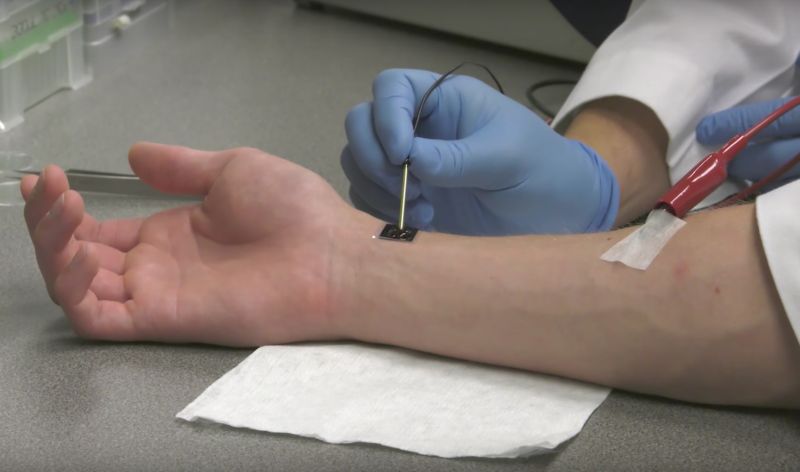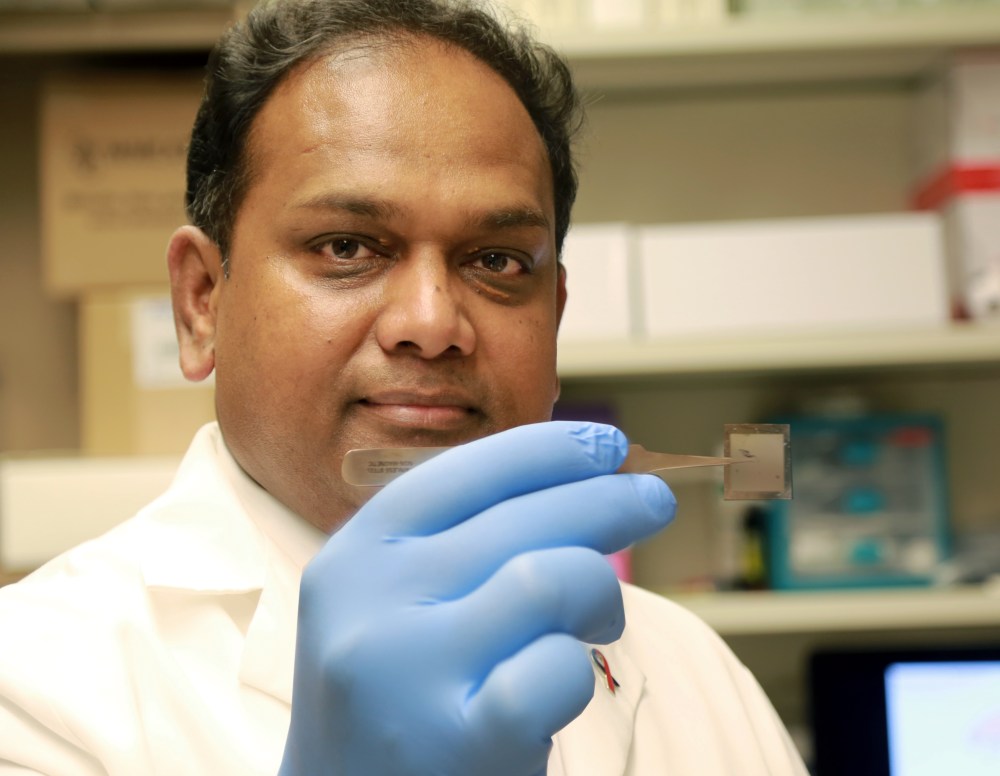Ohio University developed a chip that can repair damaged tissue in a matter of days

Technology in our time is developing so fast that all sorts of news just do not have time to be surprised. That artificial intelligence wins go from the best players in the world. That scientists with the help of bionic systems achieve unique results in the restoration of motor abilities of monkeys. And there are hundreds of such news, one more amazing than the other. Now our attention has attracted another news that is related to both genetics and electronics.
The fact is that at Ohio State University developed a technology that allows you to quickly restore the affected tissue. This technology is called "tissue nanotransfection" (English tissue nanotransfection or TNT). The technology lies in a special chip that “injects” the genetic code into the skin cells, provoking the transformation of cells from one type to another.
In the course of testing, the researchers succeeded in “reprogramming” the skin cells in such a way that they were transformed into vascular cells. Work on the transformation of one type of cells into another was carried out on a heavily damaged mouse paw, in which there was practically no blood circulation. After just one week, scientists recorded the appearance of blood vessels in the foot, and after another two weeks, the foot fully recovered. In addition, the "reprogramming" was carried out with the cells of a mouse with a stroke. Scientists assume that the technology created by them is suitable for repairing not only tissues, but also whole organs and even nerve cells. For the first time, experts have shown the transformation of cells of one species into cells of another in a living organism (meaning transformation initiated by man).

One of the authors of the study with the "transforming chip"
All equipment for carrying out this operation weighs about 100 grams. Also, the chip is non-invasive, it does not need to be sewn. The device introduces genetic material into the skin cells with the help of weak electrical discharges. They are almost not felt by humans or animals. To use it, no laboratory conditions are needed, that is, the system can be operated in virtually any conditions. And this means that it is possible to work with it even in regions very remote from civilization. As potential patients, scientists call people injured in an accident or soldiers wounded on the battlefield.
So far, the Food and Drug Administration (FDA, USFDA) has not yet approved the technology, but the review procedure has already been strained. If all goes well, the first clinical trials with human patients will take place as early as next year.
“The idea is very simple. In fact, we were even surprised how well it all works. Now in my laboratory we are conducting research in order to understand the mechanism to the end and make the technology even more efficient. So this is only the beginning, ”said one of the representatives of the project, Chengdan Sen.
The technology proposed by scientists is not unique. Something similar is being developed now by other researchers. But in this case, the specialists managed to avoid the need to use intermediate steps. In most cases, cells of the donor organism are first extracted, then processed, and then reintroduced into the same organism, where the final transformation of skin cells into stem cells takes place. This path takes much more time than in the technology proposed by the Americans from Ohio University.
In addition, in this case, the use of viruses or “manual” work with DNA is not required. An electrical discharge opens the pores of the bilayer lipid membrane in cells through which genetic material is introduced. This phenomenon, called electroporation , is used in biotechnology to introduce macromolecules (usually DNA or RNA) into mammalian, bacterial or plant cells.
The new code “reprograms” the cell so that the skin cell can turn into a liver cell, a nerve cell or another cell type. One of the key features of the technology is the ability to carry out the transformation "on the go" without a laboratory and sophisticated equipment (except for the chip), as mentioned above. As for the nerve cells, the same group of researchers managed to turn the skin cells into neurons of the brain, with full functionality.
Of course, it still takes a lot of time to check all the results of the voiced experiments. Regulatory approval is also required. Scientists remain optimistic, considering that the technology created by them is the future.


All Articles